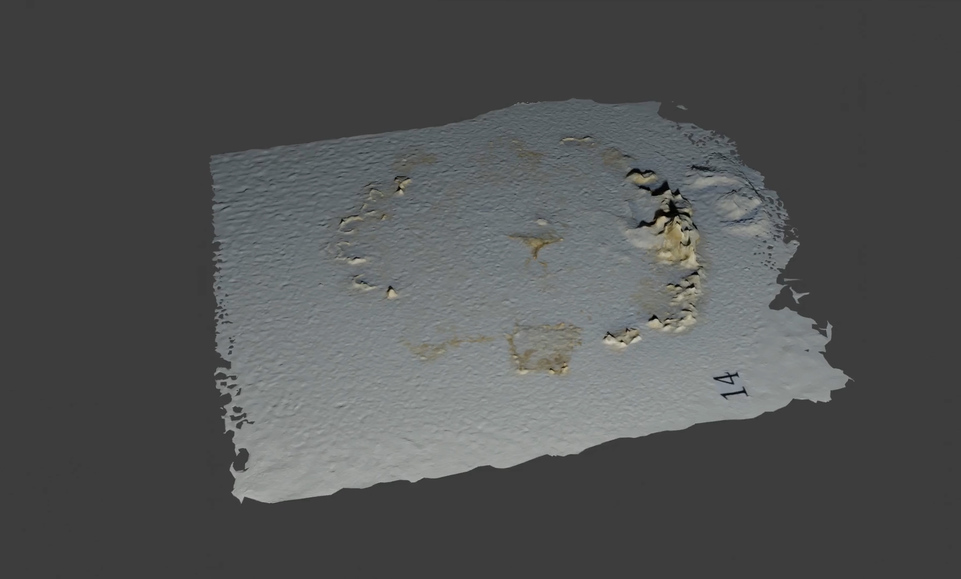REFLECTIONS ON WEEK 1
Finding it difficult to write as “Maja,” I tend to make up characters instead. It is perhaps a fun esc. button, my brain resorts to without hesitation, to cover up my avoidant self and possibly stir away from my shy and slightly reserved nature. It is one of those try-to-separate-the-artist-from-her-work situations, but I usually hide so deeply within my practice to avoid the persona part of the dilemma. Fiction is usually received with kindness, an imagined layer I prefer to expose publicly over my interests and opinions – at least in non-overly researched and well-prepared writing. Yet, making up characters situates my thinking: who/what is talking functions to contextualize the written, or somehow performs it.
I don’t think I remember how to reflect as “Maja,” at least not confidently or in writing. This is why I have decided to introduce you to a character who might become relevant at the end of this residency or even later. A character who could potentially reflect better than “Maja” ever could. A character who is part of an ecosystem within one of the local institutions – not a visitor like me, here only faintly, rushing between the programmed visits in Prizren, my master’s thesis and project in Vienna, a script for another show, and preparations for my upcoming film in Ljubljana. A chaos of cultural work personified (and I don’t even work that much by the industry’s standards).
I met her on Monday, hiding quietly beneath the office space at Lumbardhi Foundation. Suspicious of the upcoming restoration protocols in the cinema, she did not intend to reveal herself too soon. She knew the coordinator of the program, and I had been searching for her since my arrival the previous Thursday, but she kept us in the dark – she feels most comfortable there, after all. Given that I am the founder of the Institute for Mold Preservation, she eventually let me in.
An unusual aspect in discussions of mold is that Stachybotrys chartarum differs significantly from her sisters. Unlike Alternaria alternata, who eagerly spreads her spores among us, human carriers, Stachybotrys chartarum finds our presence strange and unsettling, avoiding contact whenever possible. By nature, she is a peculiar microfungus, preferring to remain isolated. She rarely mingles with other species, including other molds.
A slow-growing mildew, she is not one to compete well with other members of her family. She finds it utterly pointless. Decay is a shared responsibility, after all – why cover most surfaces with just her spores? She does not desire rapid expansion and labors consciously for quality, not quantity. As if taking up space in general was not such a great source of anxiety. If she were to breathe like a human being, she would stop, when suddenly detected, an intense dread twisting her stomach sharply. She would stumble awkwardly to make herself smaller, not letting her spores wander off noticeably.
Overwhelmed by the fast-paced colonization of her sisters, she lurks in the depths, disassociating comfortably in abandoned buildings, where water damage is common, particularly in the drywall or wallpaper. She does not inhabit fields and rarely leaves the safety of the controlled conditions of her damp and dark underground slumber. She surfaces only when mechanically disturbed, releasing her spores into the air.
Occasional interactions with human habitats may occur this way; however, habitation begins only in environments that offer abundant cellulose, notable temperature fluctuations, low nitrogen levels, the absence of other molds, no sunlight, and consistently high humidity.
Her taste is notably particular; her sisters think of her as a picky inhibitor. Sometimes soil and grain, but very seldom, only if survival is at stake. One might be inclined to conclude that she lacks motivation; however, this is largely due to her shyness, which poses a persistent challenge given her insecurities with unfamiliar environments.
It is to her sheer misfortune that she has been linked to the so-called »sick building syndrome«. This hypothesis, which is not firmly established in the scientific literature, has caused her considerable anxiety. Highly observant, she feels responsible for the consequences of her growth, however small. She had never intended to harm anyone, nor did she even want to leave the safety of her dark and damp hiding place.
